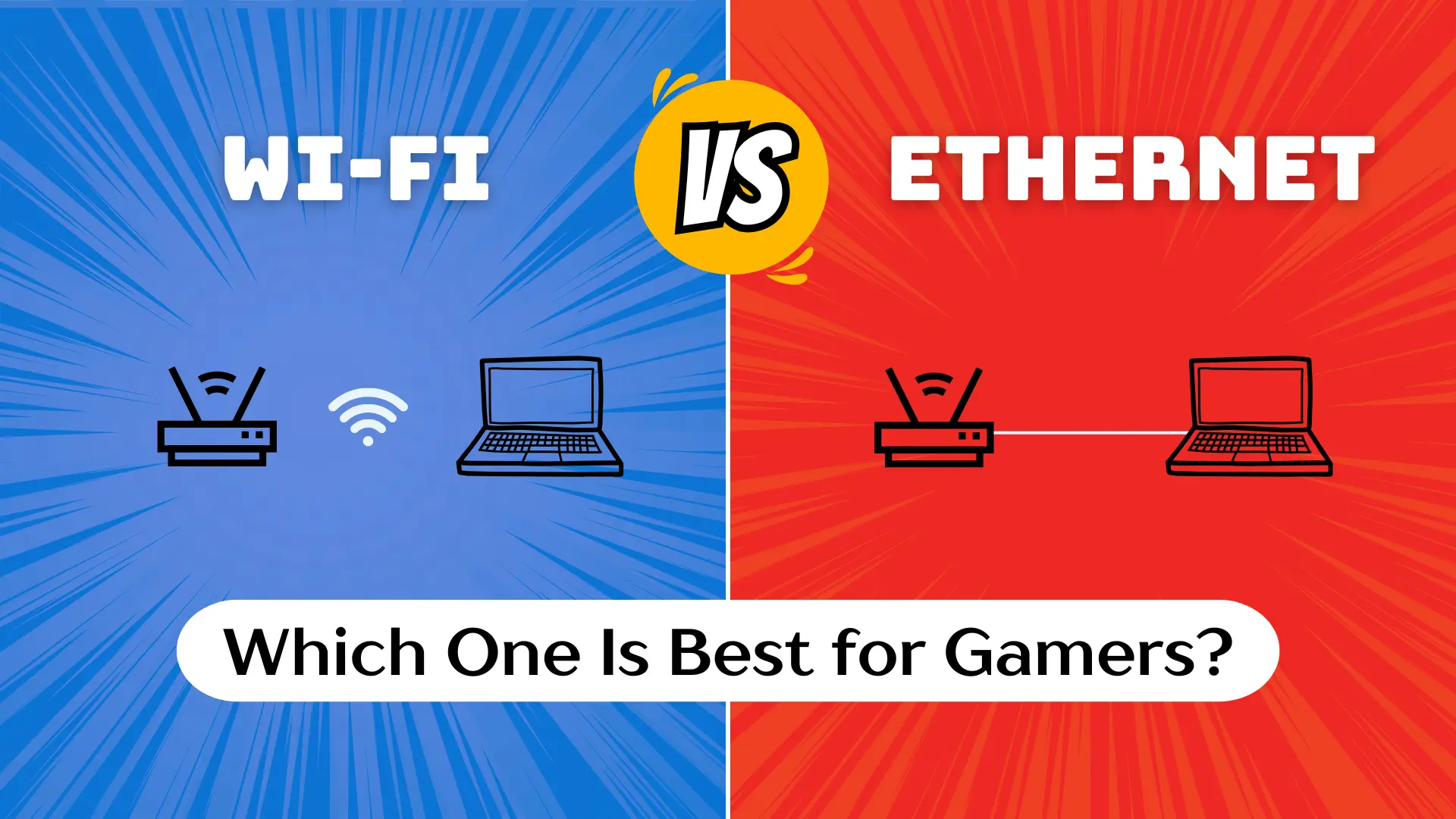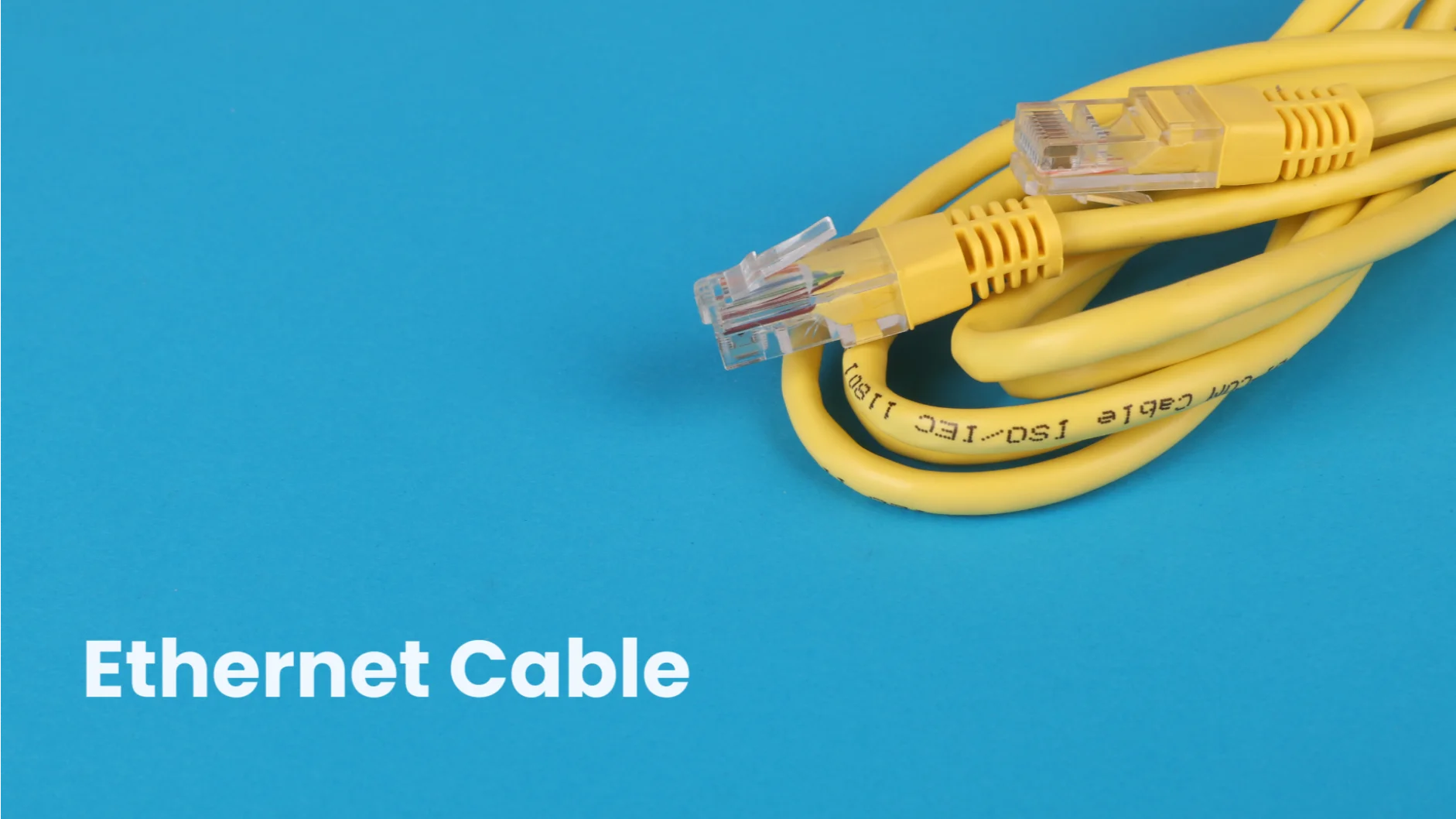
May 18, 2025
Wi-Fi vs. Ethernet: Which One Is Best for Gamers?
When it comes to online gaming, speed and stability are everything. No one wants to lose a match because of lag or experience choppy graphics during a high-stakes battle. That’s why gamers often debate: Wi-Fi vs. Ethernet — which is better?
If you’re unsure which one suits your gaming setup, this in-depth guide will help. We’ll break down each option clearly, using everyday language, so even if you’re not tech-savvy, you’ll get the full picture.
What Is Wi-Fi?
Wi-Fi is a wireless method of connecting to the internet. It uses radio signals to send and receive data between your device and your router — no cables involved.
Pros of Wi-Fi:
- Convenient and flexible – no wires needed.
- Easy to connect multiple devices.
- Works throughout the house (if the signal is strong).
Cons of Wi-Fi:
- Signal can weaken with distance or walls.
- Susceptible to interference from devices like microwaves or cordless phones.
- Not as stable as a wired connection, especially for gaming.
What Is Ethernet?
Ethernet is a wired internet connection. You plug an Ethernet cable directly into your computer or gaming console, connecting it straight to your router or modem.

Pros of Ethernet:
- Faster and more reliable speeds.
- Lower ping (response time) – crucial for gamers.
- Not affected by physical obstructions or interference.
Cons of Ethernet:
- Requires running a cable between devices.
- Less flexible — you're limited to where the cable can reach.
- Not ideal for portable or mobile gaming setups.
Why This Matters for Gamers?
When it comes to online gaming, your internet connection isn't just about speed — it's about stability, reliability, and responsiveness. Games, especially those played in real-time like first-person shooters, battle royale, or competitive sports titles, rely on a constant stream of data flowing between your device and the game server.
Even a slight disruption in that flow can cause lag, latency spikes, or even disconnections, which can seriously affect your performance and experience.
For example, imagine you're in a heated final round of a game like Valorant, Call of Duty, or FIFA, and suddenly your character stops responding for a second, not because of your skill, but because your Wi-Fi signal dropped. That tiny delay can mean missing a shot, losing a match, or being knocked out of a tournament.
Gamers also often use voice chat apps, game streaming services, or play on multiplayer servers that demand a lot from your internet connection. If your connection isn't consistent or responsive, these tools may lag or crash, affecting your entire gaming setup.
That’s why understanding the differences between Wi-Fi and Ethernet is more than just a technical debate — it's about making the right choice for your setup, so you can focus on gameplay, not connection issues.
Wi-Fi vs. Ethernet for Gaming: Comparison Table
Here’s a side-by-side comparison to help you decide:
| Feature | Wi-Fi | Ethernet |
| Speed | Can be fast, but varies due to interference or distance. | Typically faster and more consistent. |
| Latency (Ping) | Higher and less predictable. | Lower and stable – ideal for real-time gaming. |
| Stability | Can drop or fluctuate. | Very stable with minimal interruptions. |
| Ease of Setup | Easy – no cables required. | Requires a physical cable connection. |
| Mobility | Great for moving devices. | Limited – fixed by the cable length. |
| Interference Risk | High – affected by other devices or walls. | Low – shielded from most types of interference. |
| Best for | Casual gamers, mobile setups. | Competitive gamers, streaming, or online tournaments. |
Real-World Gaming Scenarios
Different games need different kinds of internet connections. While some gamers need speed and stability, others just want a smooth, relaxed experience. Let’s look at real situations to see when Wi-Fi works fine and when Ethernet gives you the edge.
If You're a Competitive Gamer: Whether you’re playing Call of Duty, Valorant, or any other fast-paced multiplayer game, Ethernet is your best bet. The lower ping and reliable connection give you the upper hand in tight situations.
If You’re a Casual Gamer or Streamer: If you're playing story-based games or watching Twitch streams, Wi-Fi can work just fine, especially if you're near the router and there’s minimal interference.

How to Make Wi-Fi Better for Gaming?
If plugging into an Ethernet cable isn't practical — whether due to device limitations or room layout — there are still several ways to boost your Wi-Fi performance for gaming. Here are some effective tips to help you get a smoother and more responsive gaming experience over Wi-Fi:
1. Move Closer to the Router
The farther your gaming device is from the router, the weaker the signal becomes. Walls, furniture, and even floors can block or weaken Wi-Fi signals. Try to game in the same room as your router or move closer to it to reduce lag and improve speed.
2. Use the 5 GHz Band
Most modern routers offer both 2.4GHz and 5GHz frequencies. The 5GHz band is typically faster and less crowded, making it ideal for gaming. It’s great for short-range, high-speed connections, especially if you're in the same room or just one room away from the router. Just remember, 5GHz doesn’t penetrate walls as well as 2.4GHz.
3. Upgrade to a Wi-Fi 6 Router
So, what is wi-fi 6? Wi-Fi 6 is the latest wireless standard, offering faster speeds, lower latency, and better performance with multiple connected devices. If you live in a household with many users streaming or browsing while you game, a Wi-Fi 6 router can help you maintain a strong connection even during peak usage times.
4. Limit Other Devices on the Network
Gaming requires a lot of bandwidth. If others are streaming HD videos, downloading large files, or video calling, your gameplay may suffer. Try to pause or limit background activities on other devices while you're gaming, or schedule game time during low-traffic hours.
5. Use a Mesh Wi-Fi System
If you have a larger home or experience dead zones, a Mesh Wi-Fi system can significantly improve your wi-fi signal strength. These systems use multiple nodes placed throughout your home to create a single, seamless Wi-Fi network. This ensures that your gaming device stays connected to the strongest possible signal, no matter where you are.
Deciding Between Ethernet and Wi-Fi for Gaming
When it comes to choosing the best connection for your gaming experience, it ultimately depends on your gaming habits and what you value most in a connection.
Choose Ethernet if:
- You're into competitive or real-time multiplayer gaming.
- Stability and speed are non-negotiable.
- You want the best possible performance.
Choose Wi-Fi if:
- You're gaming casually.
- Running cables is inconvenient.
- You optimize your router and placement carefully.
Related Blog: How to Optimize Your Internet Connection for Smooth Online Gaming?
Conclusion
In the battle of Wi-Fi vs. Ethernet for gaming, Ethernet clearly offers the most reliable and performance-driven connection. But thanks to advances in wireless tech (like Wi-Fi 6 and mesh systems), Wi-Fi is becoming a strong contender, especially for casual gamers.
If you’re serious about your online gaming performance and want to eliminate lag, Ethernet should be your go-to. But if convenience matters more and you play games occasionally, a well-optimized Wi-Fi setup can still get the job done.